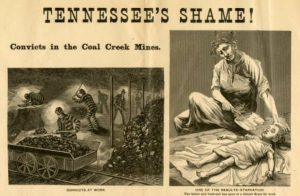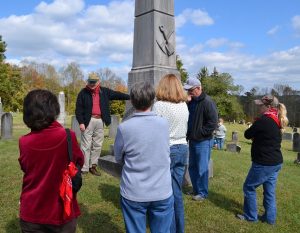Anderson County used to be known for coal mining. In the 1880s and 1890s, communities such as Coal Creek and Briceville became nationally famous because of a series of events known as the “Coal Creek War.”
The Coal Creek War occurred because companies which mined coal in places such as Anderson and Grundy Counties tried to make more money by replacing free coal miners with state prisoners under an agreement with the state of Tennessee. Free coal miners didn’t want to lose their jobs. They fought back, attacking the stockades in which the prisoners were housed and on more than one occasion setting them free.
The saga went back and forth for years until free coal miners finally won back their jobs.
Today a non-profit organization known at the Coal Creek Watershed Foundation helps students and teachers remember the saga and its connections to American history (such as to the 13th Amendment to the U.S. Constitution). The Coal Creek Watershed Foundation also reminds us about the horrible mining explosions in 1902 and 1911 which killed hundreds of men.
Finally, Anderson County’s largest city is Oak Ridge–a city with a very unusual history. Oak Ridge did not exist prior to World War II. During the Second World War, the federal government created Oak Ridge as a “secret city” to help develop uranium for the atomic bomb that the United States dropped on Japan. Oak Ridge was thus part of what was secretly known as the Manhattan Project — a government project which also involved secret communities such as Los Alamos, New Mexico, and Hanford, Washington.
Click here to take a virtual tour of the American Museum of Science and Energy and learn more about Oak Ridge.
Here is a photo of the Anderson County Courthouse.





